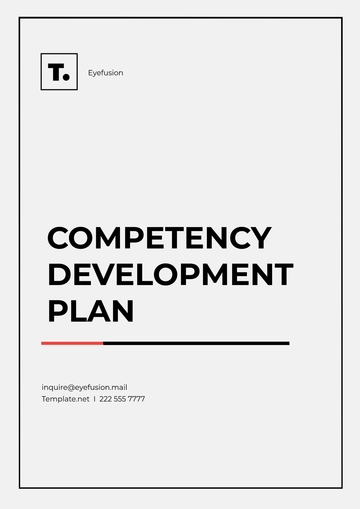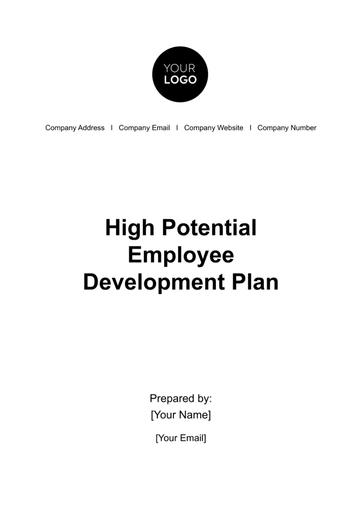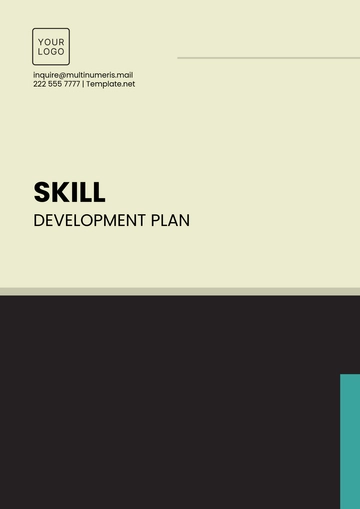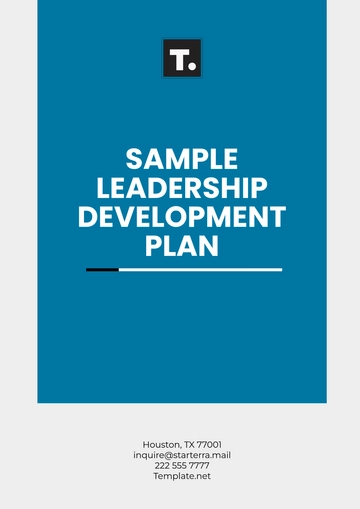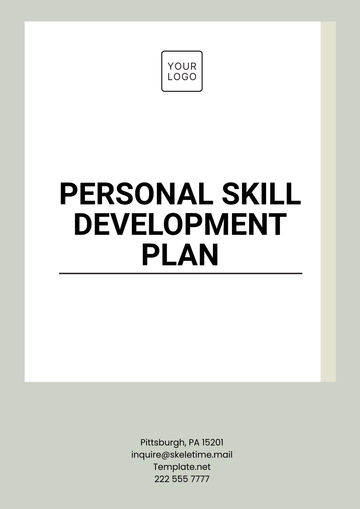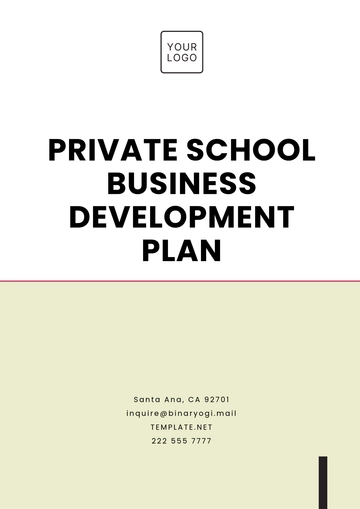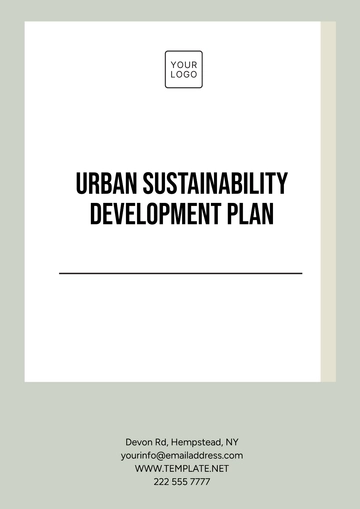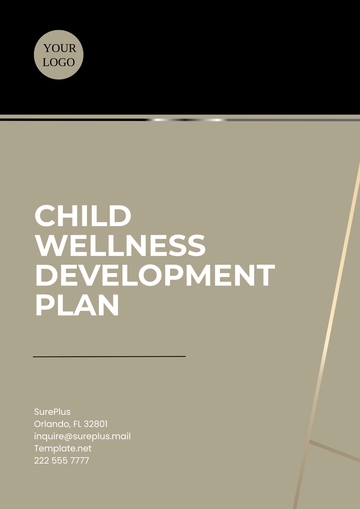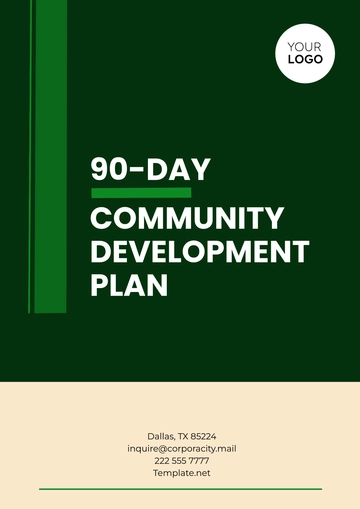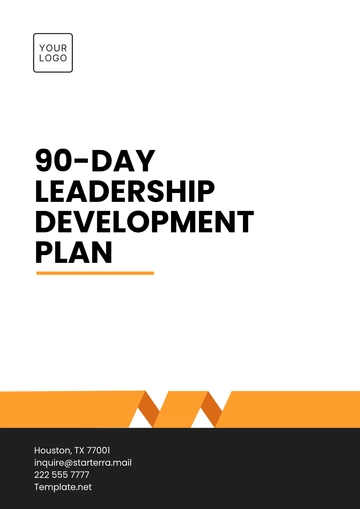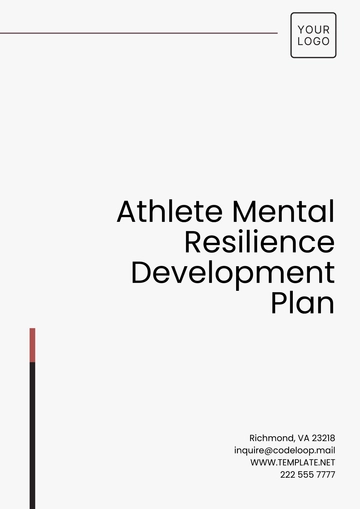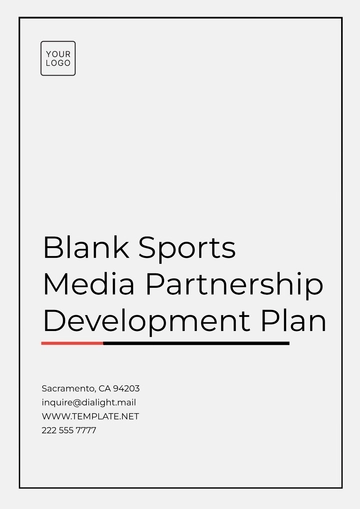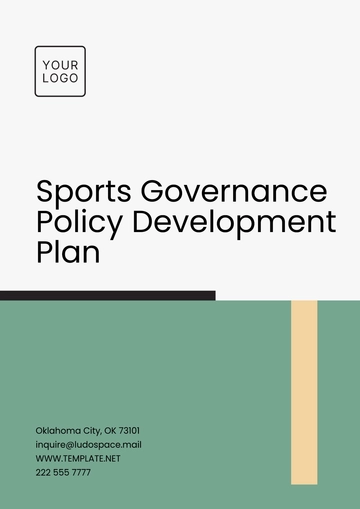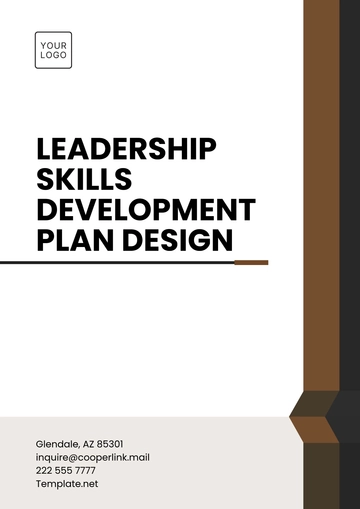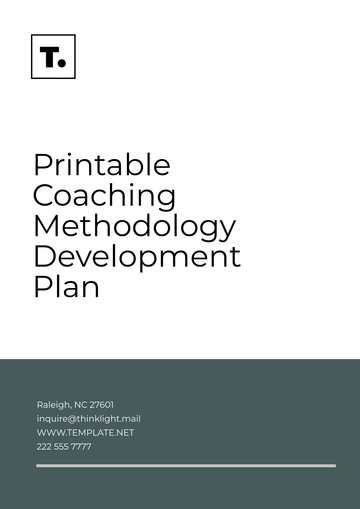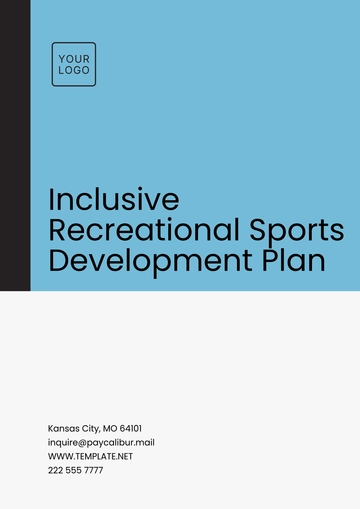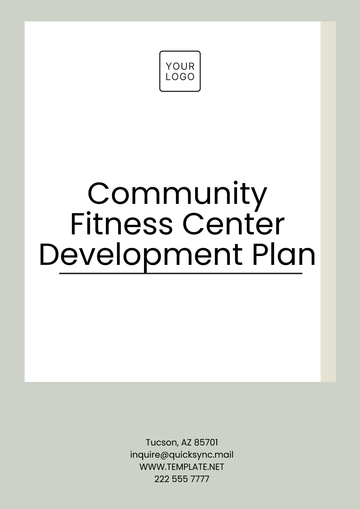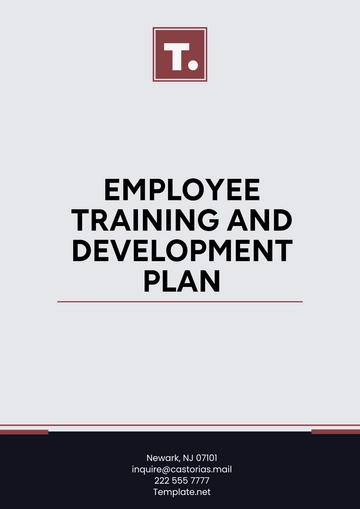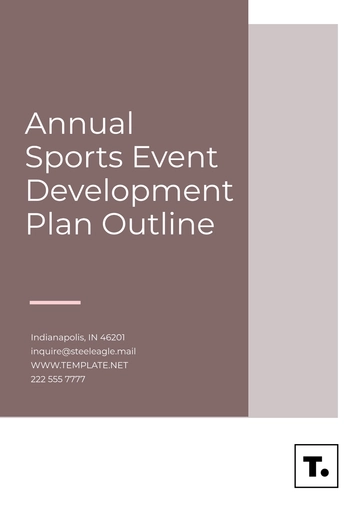Free Workplace Safety Leadership Development Plan

Development Plan
I. Executive Summary
[Your Company Name], committed to fostering a culture of safety and well-being, presents this Workplace Safety Leadership Development Plan. This plan outlines our strategic approach to developing and enhancing safety leadership skills within our organization.
A. Objectives
Elevate safety as a core organizational value.
Equip leaders with the necessary skills to champion workplace safety.
Foster a positive safety culture throughout the organization.
II. Organizational Context
A. Overview of [Your Company Name]
[Your Company Name] is an industry leader. With [500] employees, we recognize the importance of prioritizing safety to ensure the well-being of our workforce and the success of our operations.
B. Current State of Workplace Safety
1. Safety Performance Metrics:
In the past year, our safety performance metrics have shown [20%] decrease in workplace incidents. We measure success through incident frequency rate, employee safety survey scores, and days lost due to injuries. These metrics provide us with actionable insights to continually enhance our safety protocols.
2. Incident History and Analysis:
A review of recent safety incidents reveals most incidents occurred in the warehouse due to inadequate use of personal protective equipment. We have conducted root cause analyses for each incident, leading to updated training programs and enhanced safety signage. Comparing our data to industry standards, we find that our incident rate is below the industry average, indicating effective safety measures.
3. Regulatory Compliance Status:
Our compliance with safety regulations OSHA standards has been consistently maintained with no major violations over the past [five years]. Regular audits and inspections have been instrumental in this achievement. Future plans include implementing new safety technologies and enhancing employee engagement in safety programs.
III. Leadership Commitment and Vision
A. Statement of Leadership Commitment
[Your Company Name]'s leadership is dedicated to prioritizing safety at every level of the organization. We commit to creating an environment where safety is non-negotiable and integral to our daily operations.
B. Vision for Workplace Safety Leadership
Our vision is to cultivate a safety-conscious culture where every leader actively promotes and models safety behaviors, resulting in a workplace free from preventable incidents.
IV. Key Components of Workplace Safety Leadership
A. Leadership Competencies
1. Identification of Essential Safety Leadership Skills:
Developing and maintaining a culture of safety.
Proficiency in risk assessment and management.
Ability to inspire and motivate teams towards safety goals.
Competence in crisis management and emergency response planning.
Strong decision-making skills with a focus on safety implications.
2. Assessment of Current Leadership Capabilities:
A thorough evaluation of our current leadership team reveals strengths in proactive risk management and emergency preparedness. However, there's a need for improvement in areas such as consistent safety communication and employee motivation in safety practices. Action plans include targeted training and mentorship programs.
B. Communication Strategies
1. Methods for Effectively Communicating Safety Expectations:
Safety expectations are communicated through a blend of formal and informal channels, including team meetings, safety bulletins, and digital platforms. Interactive training sessions and workshops are also employed to reinforce these expectations.
2. Tools and Channels for Continuous Communication:
Continuous safety communication is facilitated through digital newsletters, a dedicated safety intranet page, regular email updates, and an anonymous reporting system for safety concerns. Additionally, we leverage social media and mobile apps for real-time safety alerts and updates.
V. Training and Development Programs
A. Leadership Training
Comprehensive modules on risk management and safety communication. Delivered through a blend of workshops, virtual seminars, and online modules.
B. Behavioral Safety Training
Focus on understanding psychological factors and promoting safe behaviors. Strategies include positive reinforcement and interactive workshops.
C. Continuous Learning
Monthly safety webinars, leadership book clubs, and industry conference participation for ongoing learning.
VI. Safety Awareness Programs
A. Regular Safety Meetings
Monthly meetings featuring discussions, case studies, and leader involvement for collaborative problem-solving.
B. Communication Campaigns
Eye-catching posters, email newsletters, and digital displays reinforcing quarterly safety themes and messages.
VII. Risk Assessment and Management
A. Risk Assessment Training
1. Educating Leaders on Identifying and Assessing Risks:
Comprehensive training on conducting risk assessments, emphasizing hazard identification, risk prioritization, and the use of risk assessment tools. Leaders will engage in hands-on exercises to enhance practical skills.
2. Implementing Preventive Measures:
Strategies include developing and implementing safety protocols, conducting regular safety audits, and utilizing technology for real-time hazard reporting. Emphasis on proactive measures to mitigate risks before incidents occur.
B. Incident Response and Reporting
1. Protocols for Reporting Safety Incidents:
Clear protocols for reporting incidents, emphasizing the importance of prompt reporting. An online reporting system will facilitate efficient documentation and communication, ensuring swift responses to incidents.
2. Post-Incident Analysis and Improvement Strategies:
After incidents, a detailed analysis will be conducted to identify root causes. Improvement strategies will be implemented, including targeted training, process adjustments, and communication enhancements to prevent recurrence.
VIII. Monitoring and Evaluation
A. Key Performance Indicators (KPIs)
1. Selection and Tracking of Safety-Related Metrics:
KPIs include Lost Time Injury Rate (LTIR), Near Miss Reporting Rate, and Safety Compliance Metrics. Monthly tracking and trend analysis will provide insights into safety performance and areas for improvement.
2. Benchmarking Against Industry Standards:
Regular benchmarking against industry standards and best practices will guide goal-setting. Collaboration with industry peers through safety forums will facilitate the exchange of insights and continuous improvement.
B. Regular Audits and Inspections
1. Internal and External Audits of Safety Processes:
Quarterly internal safety audits and annual external audits will assess compliance and effectiveness. Regular inspections will be conducted by safety committees, focusing on specific areas identified as high-risk.
2. Corrective Actions and Continuous Improvement:
Corrective actions will be implemented promptly based on audit findings. Continuous improvement strategies will involve feedback loops, employee suggestions, and regular reviews of safety protocols.
IX. Collaboration and Engagement
A. Team Building Initiatives
1. Activities to Foster Collaboration and Teamwork:
Team-building initiatives will include safety-focused escape room challenges, cross-departmental safety competitions, and collaborative safety improvement projects. Monthly safety huddles will provide a platform for open discussions.
2. Integration of Safety Goals into Team Objectives:
Safety goals will be integrated into departmental objectives. Teams will collectively set safety targets, and safety performance will be a key factor in assessing team success.
B. Employee Involvement
1. Mechanisms for Soliciting Employee Feedback:
Employee feedback will be actively sought through safety suggestion boxes, regular safety surveys, and town hall meetings. An anonymous reporting system will encourage honest input.
2. Recognition Programs for Safety Contributions:
A 'Safety Star of the Month' program will recognize employees demonstrating exceptional commitment to safety. In addition, a yearly safety awards ceremony will celebrate collective achievements.
X. Legal Compliance and External Resources
A. Awareness of Regulatory Requirements
1. Regular Updates on Safety Regulations:
A designated compliance officer will provide monthly updates on changes to safety regulations. An internal training program will ensure that all relevant personnel are well-informed and compliant.
2. Compliance Strategies and Documentation:
Documentation processes will include maintaining an up-to-date repository of safety regulations, regular internal audits for compliance verification, and a robust system for documentation and reporting.
B. External Partnerships
1. Collaboration with Safety Organizations and Consultants:
Collaborations will include membership in industry safety associations, participation in safety conferences, and periodic consultations with external safety experts to gain insights and stay ahead of emerging safety trends.
2. Utilization of External Resources for Training and Expertise:
External resources will be leveraged for specialized training programs, expert-led workshops, and assistance in developing customized safety initiatives tailored to the organization's specific needs.
XI. Communication Plan
A. Internal Communication Strategy:
With a focus on transparency, our internal communication strategy integrates safety updates seamlessly into daily workflows. Weekly newsletters, emails, and dynamic digital displays in common areas ensure real-time information dissemination. Monthly town hall meetings led by leadership provide a platform for open dialogue, reinforcing the importance of safety. Urgent alerts and notifications guarantee immediate communication of critical safety information.
This strategy not only keeps employees informed but also fosters a sense of shared responsibility, underlining our commitment to creating a workplace where safety is a collective priority and an integral part of our organizational ethos.
XII. Budget and Resource Allocation
A. Allocation of Resources:
An annual budget of $[10,000] underscores our commitment to prioritizing safety initiatives. This allocation encompasses comprehensive training programs, cutting-edge safety technology, and strategic partnerships. Quarterly reviews ensure optimal resource utilization and enable adjustments aligned with evolving safety priorities.
B. Resource Allocation for Training, Tools, and Programs:
Allocating resources judiciously, our plan earmarks funds for skilled facilitators, safety consultants, and advanced safety tools and technologies. A segment of the budget is dedicated to recognition programs, fostering a culture where proactive safety efforts are acknowledged and celebrated. This resource allocation strategy is geared towards sustaining a robust safety ecosystem within [Your Company Name].
XIII. Timeline and Implementation Plan
A. Phased Implementation:
Our phased approach ensures a systematic rollout over four distinct stages. Initiating with leadership training in [months 1-3], we progress through communication campaigns, risk management strategies, and culminate with the introduction of comprehensive monitoring systems. Each phase is strategically designed to build upon the successes of the previous, fostering an incremental and sustainable safety culture.
B. Milestones and Deadlines:
Meticulously planned milestones and deadlines provide a roadmap for timely execution. From the initiation of leadership training to the integration of monitoring systems, each stage has predefined objectives.
XIV. Evaluation and Adjustment
A. Evaluation Criteria:
Our success metrics are anchored in tangible outcomes. We aim for a [50]% reduction in Lost Time Injury Rate (LTIR), a [20]% increase in near-miss reporting, and positive trends in safety compliance metrics. Beyond quantitative indicators, employee surveys will serve as a pulse check, capturing qualitative insights into the organization's evolving safety culture.
B. Feedback Mechanisms:
Diverse feedback mechanisms, including online portals, surveys, and debrief sessions, form the bedrock of our continuous improvement strategy. Quarterly committee reviews ensure thorough analysis, driving informed adjustments.
XV. Conclusion
This Workplace Safety Leadership Development Plan reflects [Your Company Name]'s unwavering commitment to fostering a resilient and secure work environment. By instilling a culture where safety is not just a priority but an integral part of our collective consciousness, we aim to empower leaders and employees alike. This plan signifies our dedication to continuous improvement, collaboration, and the well-being of our workforce. Thank you for joining us in championing a safer and healthier future for [Your Company Name].
- 100% Customizable, free editor
- Access 1 Million+ Templates, photo’s & graphics
- Download or share as a template
- Click and replace photos, graphics, text, backgrounds
- Resize, crop, AI write & more
- Access advanced editor
Elevate your workplace safety standards with our comprehensive Workplace Safety Leadership Development Plan Template, exclusively from Template.net. Crafted for ease, it's fully editable and customizable to fit your unique organizational needs. Seamlessly modify and enhance your safety protocols with precision using our Ai Editor Tool. Optimize safety culture effortlessly.
